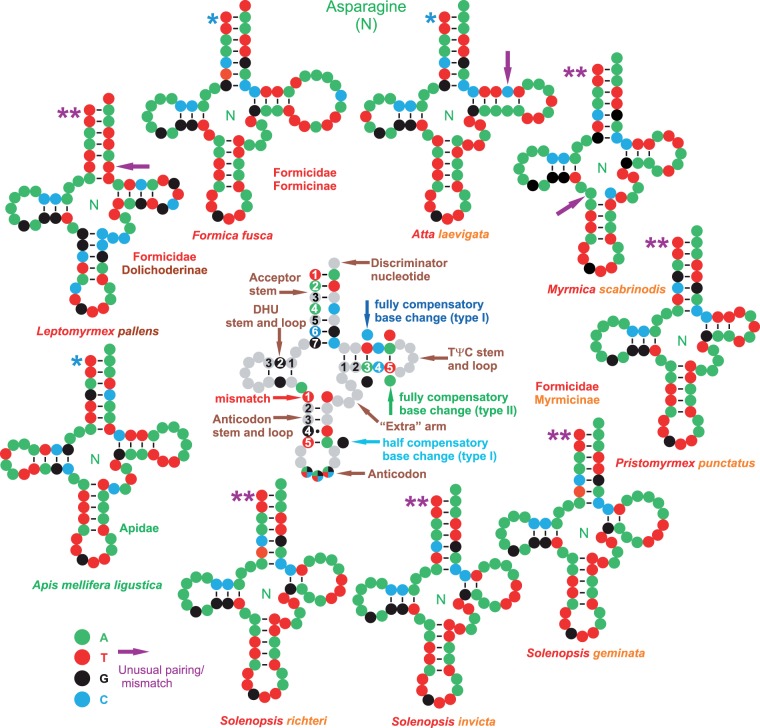Fig. 2.—
Secondary structures of the ant trnNs. Fully compensatory base changes are substitutions that do not disrupt base pairing in the stem. They are classed here as type 1 (purine—pyrimidine vs. purine—pyrimidine, and vice versa) and type 2 ((purine—pyrimidine vs. pyrimidine—purine, and vice versa). A half compensatory change implies the substitution of a single base without the disruption of the base pairing in the stem (e.g., A-T vs. G-T). A mismatch implies the disruption of the pairing in the stem. See the supplementary multiple alignment, Supplementary material online, for examples. *, trnN structure predicted by tRNAscan-Se program; **, trnN structure produced through homology modeling.

